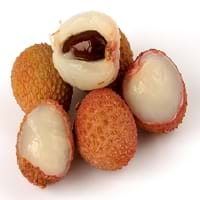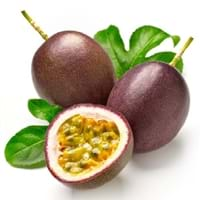Health Benefits
Cancer prevention, Cures gastro-intestinal troubles, Heart care, Muscle pain relief, Prevents blindness from diabetes
Asthma treatment, Heart care, Regulates Blood Sugar, Muscle pain relief, Reduces nervous tension
General Benefits
Boosts immune system, Digestive aid, Fights against infections, Helps in weight loss, Maintains healthy cholesterol level, Strengthens bones
Boosts immune system, Controls blood pressure, Digestive aid, Fights against infections, Helps in weight loss
Skin Benefits
Anti-aging benefits, Skin rejuvenation
Anti-aging benefits, Skin revitalization
Hair Benefits
Promotes longer and healthier hair, Protects hair
Protects hair
Allergy Symptoms
Coughing, Diarrhea, Headaches, Hives, Itching, Labored Breathing, Nausea, Runny nose, Swelling of mouth, tongue or lips, Vomiting, Watery eyes
Anaphylaxis, Breathing difficulty, Decrease in blood pressure, Dizziness, Skin rash, Swelling of face, Swelling of mouth, tongue or lips
Side Effects
May cause abdominal pain, Diarrhoea, Mouth irritation, Throat irritation, Weight gain
Stressed heart, Nausea, Vomiting, Possibly unsafe during pregnancy
Best Time to Eat
As a snack in the late afternoon, Don't consume at night and before bed, Eat the fresh ones, avoid mixing with any other foods, don't eat after meal., Morning time (before lunch), Strictly avoid empty stomach
As a snack in the late afternoon, Don't consume at night and before bed, Morning time (before lunch), Strictly avoid empty stomach
Vitamin B5 (Pantothenic Acid)
Not Available
Vitamin C (Ascorbic Acid)
Vitamin K (Phyllochinone)
Calories in Fresh Fruit with Peel
Not Available
Not Available
Calories in Fresh Fruit without Peel
Calories in Frozen Form
Not Available
Type
Tree fruit, Tropical
Tropical
Season
Spring, Summer
All seasons
Varieties
Emperor fruit, Mauritiu, Sweet Heart, Brewster, Haak Yip and Bengal
Australian Purple, Common Purple, Kapoho Selection, Pratt Hybrid, University Selection No. B-74, Waimanalo Selection and Yee Selection
Color
Bright red, Pink red
Purple, Yellow
Inside Color
Greyish-white
Yellow
Taste
Crunchy, Juicy, Sweet
Sweet, Tart
Origin
China, Indonesia, Philippines, Vietnam
Argentina, Brazil, Paraguay
Grows on
Trees
Not Available
Soil Type
Alluvial, Loam, Well-drained
Sandy loam
Climatic Conditions
Absence of strong wind, Cold, Dry, Without frosts
Frost free, Sunny, Warm
Facts about
- The seed of Lychee fruit is toxic & can adversely affect the digestive system.
- This fruit gives a smoky flavor when eaten dried.
- This fruit is a symbol of love and romance in China.
- Passion fruit tree can grow up to 20 feet in a year.
- More than 200 species of passion fruit are found near Amazon river.
- Oil extracted from its seeds is used in various cosmetics.
Top Producer
China
Brazil
Other Countries
Australia, India, South Africa, Thailand, United States of America
Colombia, Ecuador, Indonesia, Kenya, Peru
Top Importer
Hong Kong
Brazil
Top Exporter
China
Ecuador
Botanical Name
Litchi chinensis
Passiflora edulis
Synonym
Nephelium litchi
Passiflora edulis f. edulis or Passiflora edulis f. flavicarpa
Subkingdom
Tracheobionta
Tracheobionta
Division
Magnoliophyta
Magnoliophyta
Class
Magnoliopsida
Magnoliopsida
Subclass
Rosidae
Dillenhidae
Order
Sapindales
Malpighiales
Family
Sapindaceae
Passifloraceae
Species
L. chinensis
P. edulis
Generic Group
Soapberry
Passion Flower
Difference Between Lychee and Passionfruit
We might think that Lychee and Passionfruit are similar with respect to nutritional value and health benefits. But the nutrient content of both fruits is different. Lychee and Passionfruit Facts such as their taste, shape, color, and size are also distinct. The difference between Lychee and Passionfruit is explained here.
The amount of calories in 100 gm of fresh Lychee and Passionfruit with peel is Not Available and Not Available and the amount of calories without peel is 66.00 kcal and 97.00 kcal respectively. Thus, Lychee and Passionfruit belong to and category.These fruits might or might not differ with respect to their scientific classification. The order of Lychee and Passionfruit is Sapindales and Malpighiales respectively. Lychee belongs to Sapindaceae family and Passionfruit belongs to Passifloraceae family. Lychee belongs to Litchi genus of L. chinensis species and Passionfruit belongs to Passiflora genus of P. edulis species. Beings plants, both fruits belong to Plantae Kingdom.









